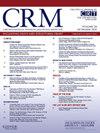使用 Acurate Neo2 经导管主动脉瓣置换术后的传导障碍:倾向匹配分析
IF 1.6
Q3 CARDIAC & CARDIOVASCULAR SYSTEMS
引用次数: 0
摘要
背景:ACURATE neo2经导管主动脉瓣的开发旨在提高腔旁漏(PVL)率,同时保持其前身所具有的低传导障碍率和永久起搏器植入率(PPMI)。我们旨在比较使用 ACURATE Neo2 的经导管主动脉瓣置换术(TAVR)与其他常用瓣膜的传导干扰率:我们对 2014-2023 年间的以色列 TAVR 登记进行了回顾性分析,以比较 ACURATE neo2、Edwards Sapien 3 (S3) 和 Evolut PRO 瓣膜治疗患者的传导障碍和 PVL 发生率以及手术结果。为比较具有相似特征的组别,进行了倾向评分匹配:在排除非股动脉入路、瓣膜类型未知、老一代瓣膜和不常用瓣膜的患者(n = 4387)后,我们的分析包括3208名使用ACURATE neo2、Edwards S3和Evolut PRO瓣膜进行TAVR的患者。倾向匹配组各由 169 名患者组成。与其他两种瓣膜相比,ACURATE neo2 组出现任何传导障碍[左束支传导阻滞 (LBBB)、房室传导阻滞或 PPMI]的比例较低[15.8%,S3-37.5% (p 结论:ACURATE neo2 组出现传导障碍的比例较低,S3-37.5% (p 结论:ACURATE neo2 组出现传导障碍的比例较高]:在这项分析中,与Evolut PRO和Edwards S3瓣膜相比,使用ACURATE neo2进行TAVR的传导障碍综合发生率较低,这主要是由于左束支传导阻滞发生率较低,而PPMI和PVL的发生率则无显著性差异。本文章由计算机程序翻译,如有差异,请以英文原文为准。
Conduction disorders following transcatheter aortic valve replacement using acurate Neo2 transcatheter heart valve: A propensity matched analysis
Background
The ACURATE neo2 transcatheter aortic valve was developed to improve paravalvular leak (PVL) rates while maintaining low rates of conduction disturbances and permanent pacemaker implantation (PPMI) seen with its predecessor. We aimed to compare conduction disturbances rates of transcatheter aortic valve replacement (TAVR) using ACURATE Neo2 with other commonly used valves.
Methods
A retrospective analysis of the Israeli TAVR registry between the years 2014–2023 was performed to compare conduction disturbances and PVL rates, and procedural outcomes, among patients treated with ACURATE neo2, Edwards Sapien 3 (S3), and Evolut PRO valves. Propensity score matching was performed to compare groups with similar characteristics.
Results
Following exclusion of patients with non-femoral access, unknown valve type, older-generation valves, and less commonly used valves or (n = 4387), our analysis included 3208 patients undergoing TAVR using ACURATE neo2, Edwards S3, and Evolut PRO valves. Propensity matched groups comprised 169 patients each. Rates of any conduction disturbances [left bundle branch block (LBBB), atrioventricular block, or PPMI] were lower in the ACURATE neo2 group compared to both other valves [15.8 %, S3–37.5 % (p < 0.001), Evolut PRO-27.5 % (p = 0.02)] as were LBBB rates [9.0 %, S3–31.3 % (p < 0.001); Evolut PRO-20.1 % (p = 0.01). Atrioventricular block and PPMI rates were lower without statistical significance, as were rates of above-moderate PVL.
Conclusions
In this analysis, TAVR using ACURATE neo2 was associated with a lower composite rate of conduction disturbances in comparison to the Evolut PRO and Edwards S3 valves, mainly due to lower left bundle branch block rates, with non-significantly lower rates of PPMI and PVL.
求助全文
通过发布文献求助,成功后即可免费获取论文全文。
去求助
来源期刊

Cardiovascular Revascularization Medicine
CARDIAC & CARDIOVASCULAR SYSTEMS-
CiteScore
3.30
自引率
5.90%
发文量
687
审稿时长
36 days
期刊介绍:
Cardiovascular Revascularization Medicine (CRM) is an international and multidisciplinary journal that publishes original laboratory and clinical investigations related to revascularization therapies in cardiovascular medicine. Cardiovascular Revascularization Medicine publishes articles related to preclinical work and molecular interventions, including angiogenesis, cell therapy, pharmacological interventions, restenosis management, and prevention, including experiments conducted in human subjects, in laboratory animals, and in vitro. Specific areas of interest include percutaneous angioplasty in coronary and peripheral arteries, intervention in structural heart disease, cardiovascular surgery, etc.
 求助内容:
求助内容: 应助结果提醒方式:
应助结果提醒方式:


